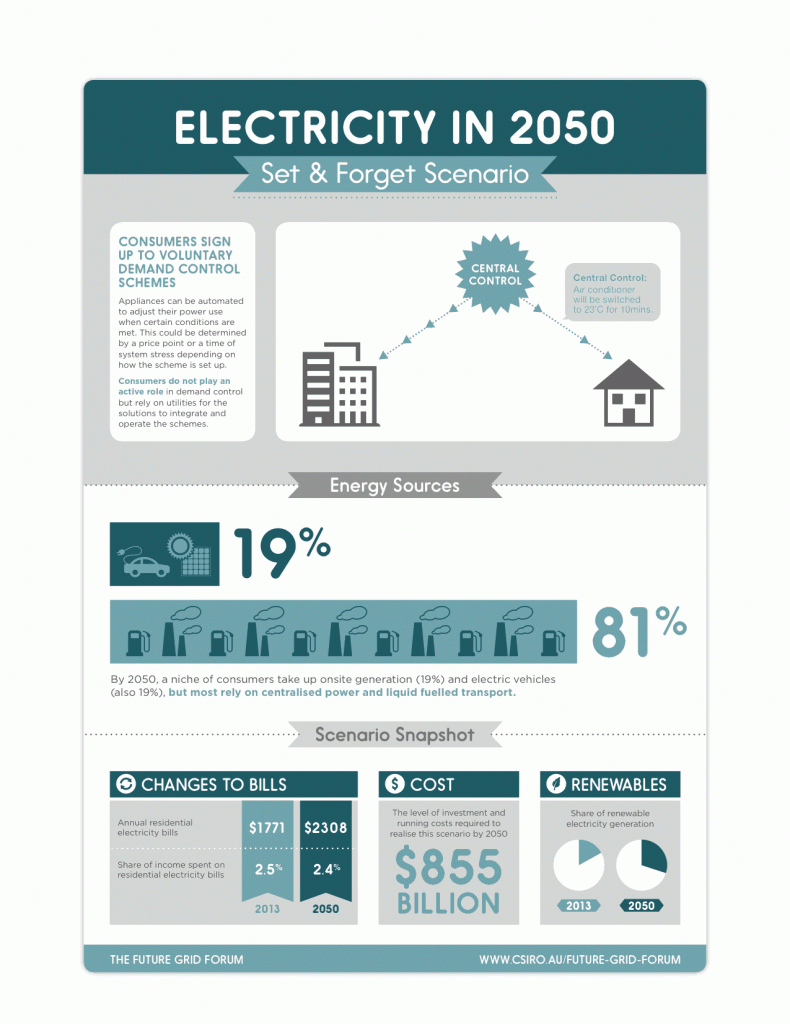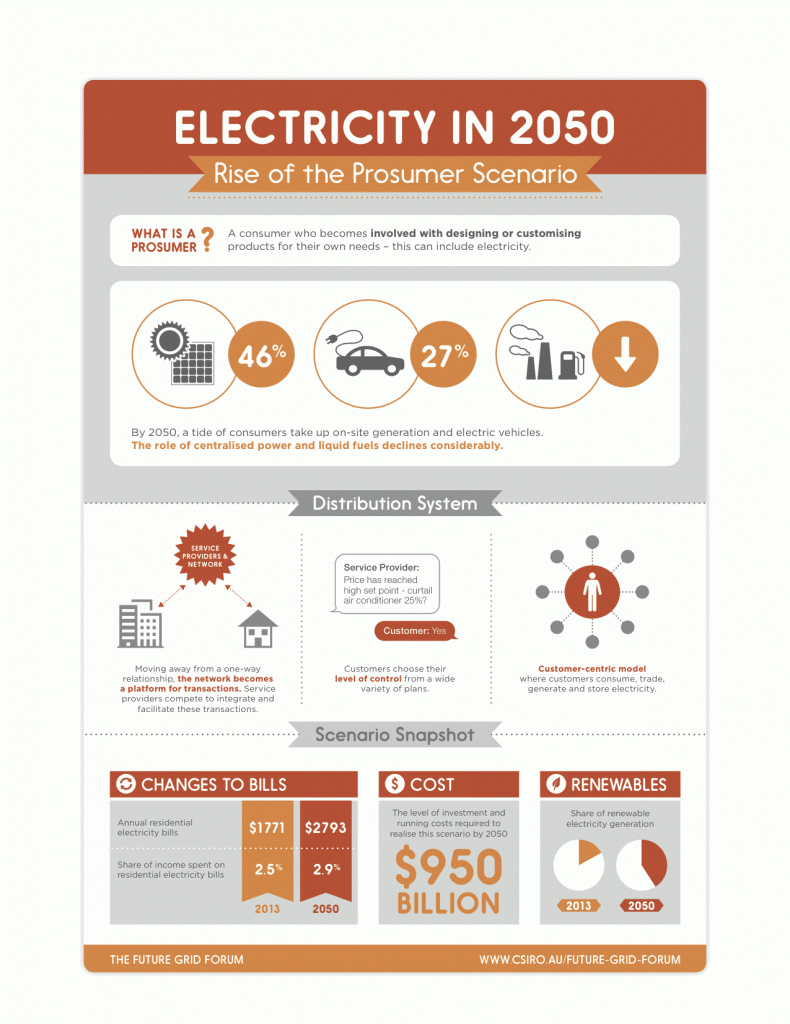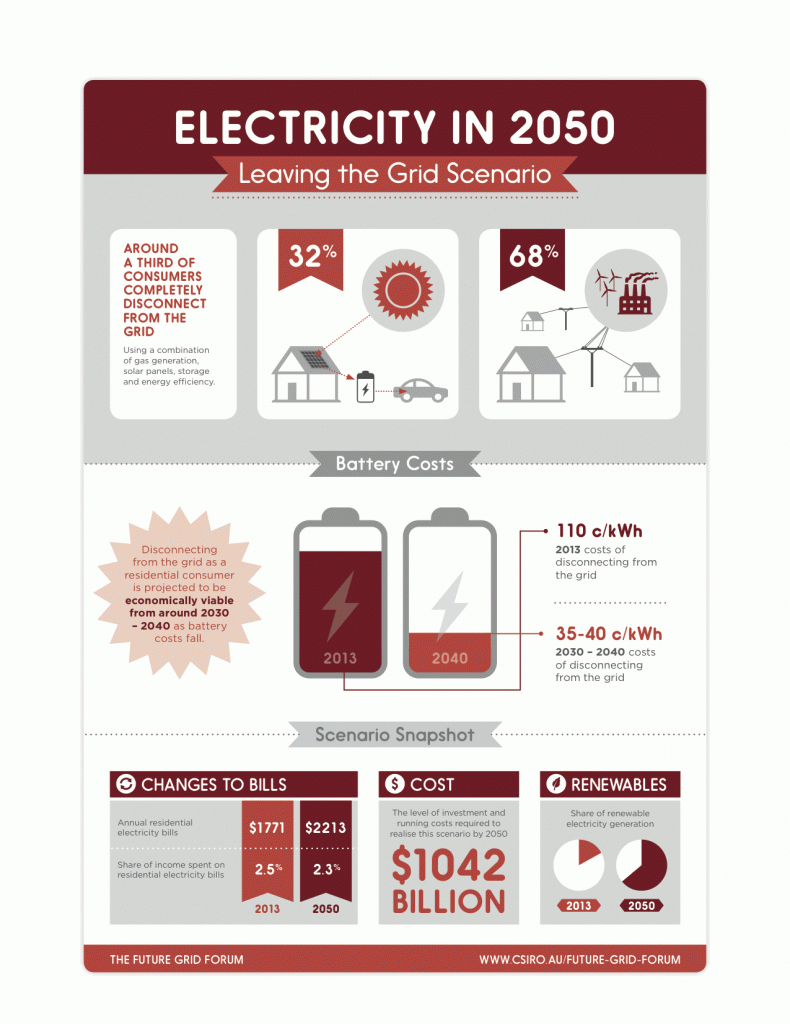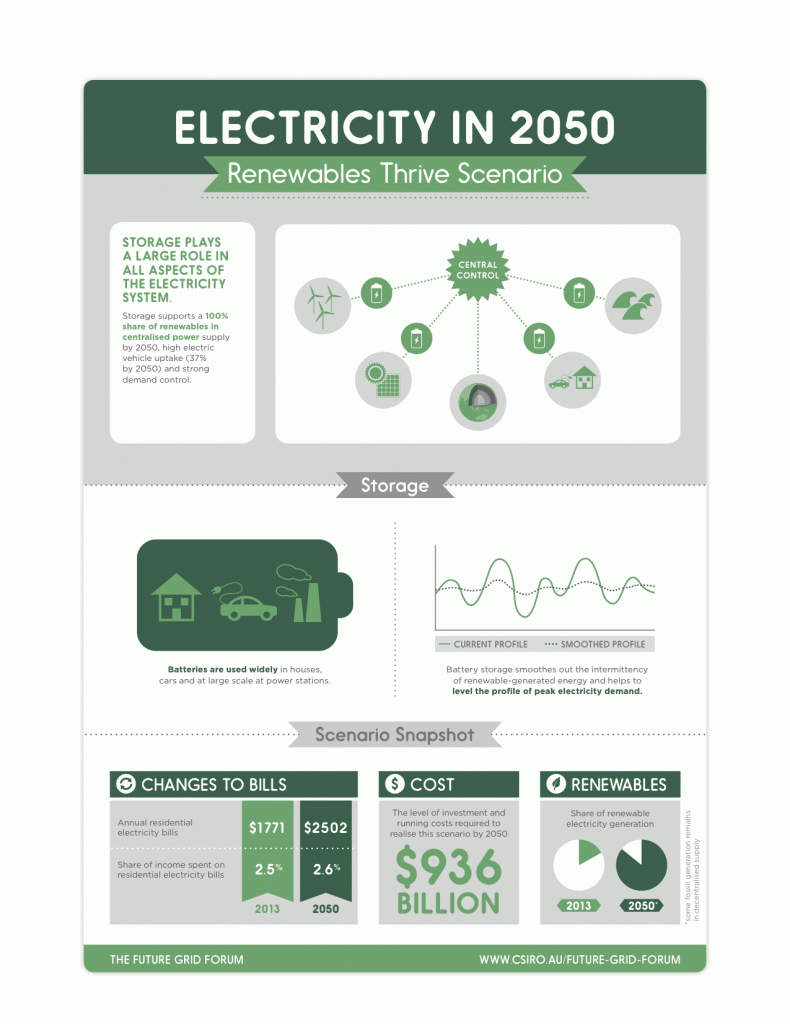How will electricity be generated, stored, and distributed in the future? This question is one of the most pressing of our time, and countless organisations have had a shot at guessing what the future might bring for the energy infrastructure of individual countries and the globe as a whole. At this point, it seems clear that renewable energy will play a much larger role in the future than currently, but to what extent and in what way are still anyone’s guess. CSIRO, working with a wide array of partners in the energy, education, and finance sectors, has recently taken a look at the issue with its groundbreaking Future Grid Forum, producing 4 scenarios that they believe have some probability of eventuating in Australia. Of these, 3 of the scenarios envision serious growth in uptake of renewable energy technology, with the major differences between them being concerned mainly with who generates that electricity and how it is distributed.
Future Grid Forum Scenarios
Scenario 1: ‘Set and Forget’ – Consumers remain passive, renewables contribute relatively little
CSIRO first examines the implications of what it calls a ‘set and forget’ scenario, in which electricity users remain passive but where utilities can remotely control electronic devices (with the consent of the household/business, of course) or appliances could be programmed to automatically adjust their own consumption levels as necessary to reduce overall electricity demand. In this situation, only 19% of homes and businesses would have their own solar (or other distribute energy) systems or electric vehicles, and the nation’s renewable energy capacity would be at about double its current proportion of the total energy mix.
(Click to Enlarge. Image via CSIRO.)
Scenario 2: ‘The Rise of the Prosumer’ – Electricity end-users have an active role in their own electricity usage, higher uptake of renewables
CSIRO defines a prosumer as a ‘consumer who becomes involved with designing or customising products for their own needs’, playing a much more active role in their own electricity consumption than is currently the case. In this scenario, 46% of homes would have distributed energy systems (mainly rooftop solar PV) and about 27% would have electric vehicles.
(Click to Enlarge. Image via CSIRO.)
Scenario 3: Going off-grid – Around 1/3 of electricity users get off-grid, renewables uptake grows dramatically
In this scenario, rising electricity prices combined with distributed energy (particularly energy storage) technology prices falling, a portion of homes and businesses are driven to shed connections to the electricity grid altogether. Renewables–both grid-connected and off-grid–see massive uptake, with nearly 70% of Australia’s electricity coming from renewable energy technologies.
(Click to Enlarge. Image via CSIRO.)
Scenario 4: Renewables reign – Energy storage ubiquitous, nearly all electricity is from renewables
In the most optimistic scenario for renewable energy advocates, nearly everyone would have either a distributed energy system, a battery bank, and electric vehicle, or all of the above. Although fossil fuels would still play some role in the electricity mix, this role would be relegated to minor status. This would be thanks mainly to the affordability of both large and small energy storage systems, which would be able to capture energy from wind and solar for later use.
(Click to Enlarge. Image via CSIRO.)
So what will the future grid look like, then?
CSIRO makes clear that it is not making any predictions with its scenarios, instead saying that the 2050 electricity grid will doubtless be some combination of the 4 scenarios. Nevertheless, the framework of the vision that they set out give some insight into the trends that are only just now beginning to take shape in Australia. The first and most obvious change that has taken place across Australia has been the broad uptake of rooftop solar systems, whose numbers have grown enormously in recent years–just reaching the 3 gigawatt capacity mark this month.
© 2013 Solar Choice Pty Ltd
- Solar Power Wagga Wagga, NSW – Compare outputs, returns and installers - 13 March, 2025
- Monocrystalline vs Polycrystalline Solar Panels: Busting Myths - 11 November, 2024
- Solar Hot Water System: Everything You Need to Know - 27 February, 2024



